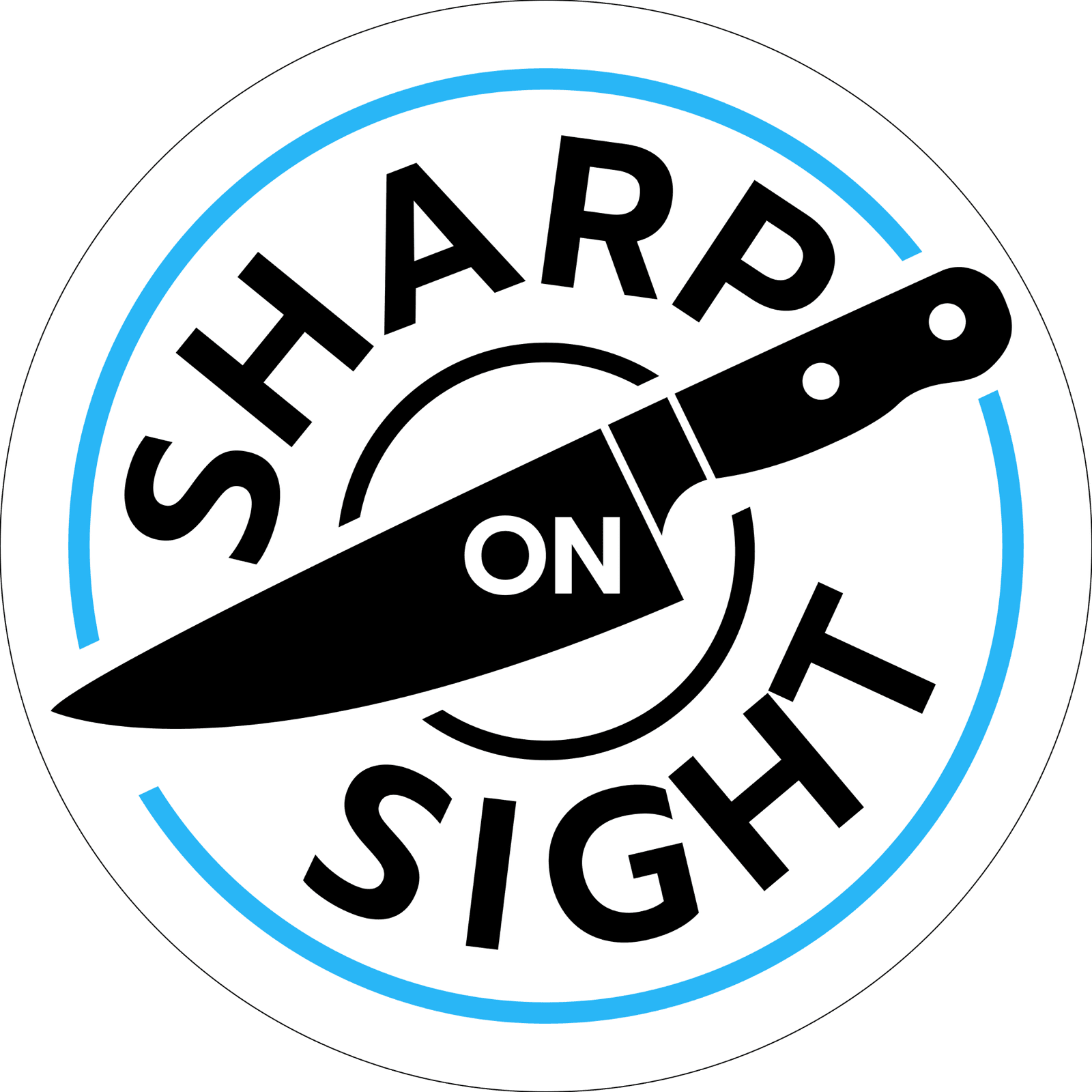The Best Cutting Boards for Knife Longevity (Ranked by a Sharpener)

When you’ve spent the time (and money) keeping your knives sharp, the last thing you want is to ruin the edge on the wrong cutting board. As a professional knife sharpener, I’ve seen the damage certain boards can do—chips, rolls, and accelerated dulling. But the good news is, choosing the right board can dramatically extend the life of your edge.
In this guide, I’m breaking down the pros and cons of the most common cutting board materials, recommending what to use based on your knife type, and sharing what I use in my own kitchen (and why).
Why Your Cutting Board Matters
Every time your blade contacts the board, it interacts with a surface that can either preserve or degrade the edge. Very hard surfaces—like glass, granite, or ceramic—can cause immediate damage, while others like wood and rubber are much more forgiving. Even plastic boards, while common, come with health and longevity concerns.
Choosing the right surface helps you stretch out the time between sharpenings and reduce premature edge wear.
1. End-Grain Wood Cutting Boards (Top Choice)
Best for: Chef’s knives, santokus, nakiris, and other general-purpose kitchen knives
What it is: End-grain boards are made from wood blocks arranged so the wood grain runs vertically. You’re essentially cutting into the grain rather than across it.
Pros:
- Gentle on your edge
- Self-healing surface (knife marks close over time)
- Durable with proper care
Cons:
- Expensive upfront
- Requires regular oiling and care
- Heavy and bulky
Top picks:
- Maple, walnut, cherry
- Avoid soft woods (they’ll dent) and overly decorative boards that are glued without food-safe adhesives
Note: While wood has some moisture-wicking and drying properties, it is not inherently antimicrobial. Proper cleaning and maintenance are still essential.
2. Edge-Grain Wood Cutting Boards
Best for: Mid-tier kitchen knives, daily prep for home cooks
What it is: These are solid wood boards where the grain runs horizontally along the length of the board.
Pros:
- More affordable than end-grain
- Easier to find in stores
- Gentler than hard plastics or glass
Cons:
- Not as forgiving as end-grain
- Shows knife marks more quickly
- Slightly harder on your edge
Good option if: You want something better than synthetic materials but don’t want the price tag or weight of end-grain.
3. Rubber Cutting Boards
Best for: Sushi chefs, pros, and serious home cooks who prioritize edge retention
What it is: Boards made from high-density rubber like Sani-Tuff or similar materials.
Pros:
- Extremely gentle on edges
- Non-slip and durable
- Resists moisture and bacteria
- Can be resurfaced with sanding
Cons:
- Pricey
- Heavy and industrial-looking
- Can smell when new
Use case: Ideal for knives you want to baby—like high-end Japanese steels or ultra-thin chef’s knives.
What I like: Rubber boards are unsung heroes. They don’t look fancy, but the edge retention speaks for itself. Just avoid slicing acidic foods and leaving juice on them too long—it can stain.
Boards to Avoid Completely
Plastic, Glass, Granite, Marble, Ceramic
These are murder on your edge—or worse, your health.
Plastic boards are not only harder on knives over time, but they also raise real concerns about microplastics. Every time you cut into one, you risk ingesting microscopic plastic particles along with your food. That’s reason enough to skip them entirely.
Hard surfaces like glass and stone can chip or roll your edge almost immediately. They’re fine for serving cheese—not for prepping dinner.
What I Use (And Why)
At home:
- Large end-grain maple board for 90% of cutting tasks
- Rubber board for test sharpening or when evaluating new knives
On the road (farmers markets, demos):
- Rubber boards—they travel well, clean up easily, and keep demo knives in good shape
Knife Type Recommendations
Chef’s knives / Santoku / Utility:
- Best with end-grain or rubber
Cleavers / Butcher knives:
- Edge-grain or rubber (cleavers don’t need as much edge protection)
Japanese knives (hard steels):
- Rubber or end-grain only—avoid plastic entirely
Serrated knives:
- More forgiving, but still avoid glass and synthetic materials
Final Thoughts: A Small Change That Saves Your Edge
Your sharpening schedule, technique, and knife steel all matter—but don’t overlook your cutting board. Switching to a more edge-friendly and food-safe board can instantly reduce how often you need sharpening, preserve your bevel geometry, and even protect your health.
If you're not sure what board to get—or if you’re dealing with a damaged edge—reach out. Sharp On Sight offers professional sharpening in Sun Prairie and Madison, WI, and we’re happy to help you get the most life out of your blades.
Need help with your edge?📍 Drop off at 215 E Main Street, Sun Prairie, WI (use code 299181)
🔧 Live sharpening: Saturdays at the Sun Prairie Farmers Market, Tuesdays at St. Vinny’s, Wednesdays in Waunakee
📞 Questions? Reach out anytime.
Message Sharp On Sight | Local Sharpening Pros
Ready for Razor-Sharp Precision?
Whether you're looking for a quote or just have a question, I'm here to help. Reach out, and let's bring those edges back to life.
